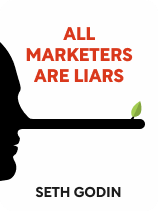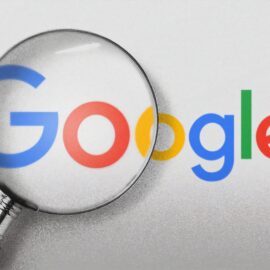

This article is an excerpt from the Shortform book guide to "All Marketers are Liars" by Seth Godin. Shortform has the world's best summaries and analyses of books you should be reading.
Like this article? Sign up for a free trial here .
How has marketing changed over time? What accounts for these changes?
Seth Godin argues that traditional advertising doesn’t work anymore. He gives three reasons for this and goes on to describe the new age of marketing that we’ve entered.
Keep reading to learn more about the end of traditional advertising.
Why Traditional Advertising Is Dead
When you hear the word “advertising,” what do you think of? If catchy jingles, milk carton ads, or TV infomercials come to mind, you’re probably thinking of old marketing techniques. These methods were popular in the golden age of television, when there were only a few channels on TV. Fewer channels resulted in advertising that addressed the masses and appealed to universal needs. However, traditional advertising doesn’t work anymore, and Godin cites a few reasons for this.
First, thanks to the internet, marketers have more opportunities to sell their products.
(Shortform note: According to Godin, because of an increasing amount of media options and consumption, there are more ways to tell complex, yet subtle stories about products. YouTube ads, influencer sponsorships, email marketing, social media marketing, and brand partnerships are just a few examples.)
Second, marketing to people’s needs won’t work anymore, because 1) our basic needs are easier to fulfill (in most parts of the developed world), and 2) there are too many options in the marketplace to stand out by fulfilling a need alone.
(Shortform note: Godin’s assertion that people’s basic needs are easier to fulfill may reflect a privileged stance. According to this 2018 study conducted by the Urban Institute, almost 40% of Americans struggle to meet at least one of their basic needs for food, shelter, health care, and utilities.)
Finally, Godin indicates that a good quality product simply isn’t enough anymore. There are plenty of good products on the market and being the cheapest or fastest won’t necessarily ensure your success.
(Shortform note: Other marketers recommend that you still appeal to needs. In Building a StoryBrand, Donald Miller suggests that marketers present a survival-related message about their product, such as saving the customer money, time, or resources.)
| Is Traditional Advertising Actually Outdated? Old marketing focused on converting as many potential consumers (known as leads) into actual customers. Think of traditional advertising like a fisherman’s net—the idea was to cast a broad net to catch as many fish as possible. This is a much less targeted approach than is used today. Old marketing also focused on push marketing, which aimed to get consumers’ attention by catching them off-guard or “pushing” products in front of them to get their interest. This is different from pull marketing, which is associated with new marketing and involves drawing consumers to you. However, traditional advertising isn’t completely obsolete. One marketing expert found that old marketing techniques like promotional gifts, coupons, and slogans are still effective. You should tailor your use of old advertising and push/pull marketing to your specific product and campaign. |
The Age of New Marketing
We’ve established that the traditional advertising techniques aren’t effective in attracting new customers anymore. In addition, the previous focus on reducing production costs no longer helps the bottom line. Because of outsourcing and advances in manufacturing techniques, making products is pretty easy and cheap now. So what do these changes mean for marketers?
New marketing places more focus on the consumer’s perspective. According to Godin, new marketers must keep up with the constantly evolving marketplace and changing consumer demands. He urges marketers to understand that they are not in charge—consumers are. Your marketing message should be tailored to resonate with customer interests and emotions. And the best way to ensure that your message resonates is to tell a story.
| Updating the Definition of Marketing Godin’s view of marketing as focusing on the consumer soon won converts in the industry. In 2008, the American Marketing Association (AMA) echoed this view when they updated their definition of marketing. The new definition described marketing as an educational process that benefits marketers, consumers, and society as a whole. This definition differs from the AMA’s previous one, which defined marketing as a function that delivers value to customers for the benefit of companies. |

———End of Preview———
Like what you just read? Read the rest of the world's best book summary and analysis of Seth Godin's "All Marketers are Liars" at Shortform .
Here's what you'll find in our full All Marketers are Liars summary :
- The difference between lying and telling a great story
- How to better understand your customer
- How to overcome common obstacles you’ll encounter in marketing






